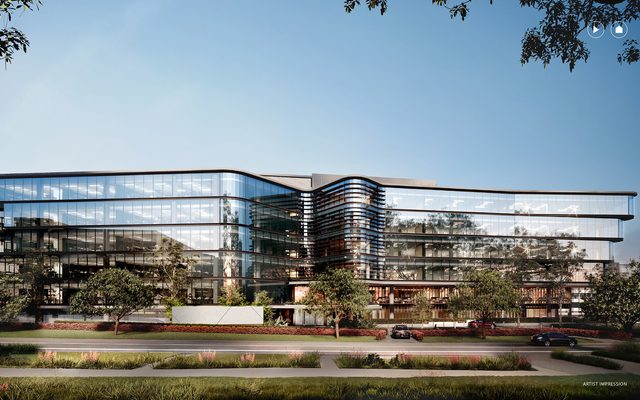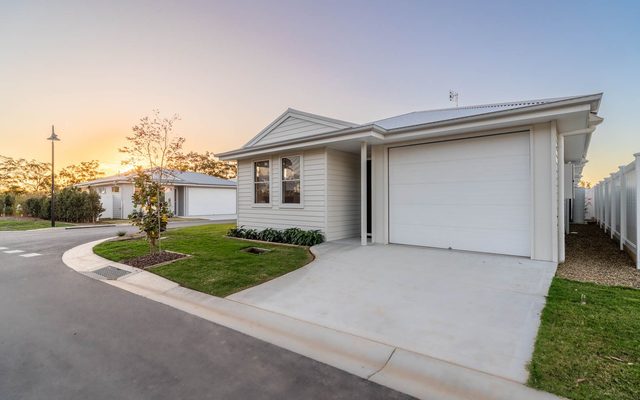This article is from the Australian Property Journal archive
LOW interest rates and the prospect of further cuts will drive capital growth and double digit returns across Australia’s commercial property market in 2020.
Further yield compression is also likely, according to Knight Frank’s Outlook 2020 Report, and paired with capital raisings will underpin more development starts.
Ben Burston, Knight Frank’s chief economist said the Australian economy should gradually regain momentum in 2020 as a result of lower interest rates and the recovery in the housing market.
“However, despite an extended cycle, we are yet to see the re-emergence of inflationary pressures and stronger wage growth. In fact, there is a high chance that interest rates will move even lower in 2020, and the RBA may even undertake quantitative easing.
“As a result of a sharp downward shift in interest rates, and the prospect of further RBA action, we expect the investment market will drive to new highs in 2020, prolonging the property price cycle.
“In a sense, the Australian market is continuing to play catch-up to the unprecedented lowering of global interest rates.”
A-REITs have enjoyed elevated returns from the office and industrial sectors recently.
Based on the historic lag between bond yields and prime office yields, Knight Frank expects further yield compression during 2020 and 2021. Prime Sydney CBD office property yields will decline by 50 basis points over the next two years to 4.1%.
Paul Roberts, head of institutional sales, Knight Frank said the shift in interest rates has changed investor perception of pricing and the outlook, and major investor groups, both local and offshore, are gearing up for the next phase of investment in the office market.
“Groups from Hong Kong, Singapore and Europe continue to seek core assets with fundamental stability, and Australia is an extremely attractive proposition for them, while local wholesale funds and superannuation groups remain just as competitive.
“The challenge is accessing sufficient stock to satisfy the demand for core product, and this competitive tension is likely to drive yields lower over the period ahead.”
Large institutional investors have been particularly responsive to the shift to lower interest rates, and pushing investment activity at the $200 million-plus level to account for 59% of investment volumes in 2019, well above the average of 35% since 2010.
Slowing growth and greater uncertainty around the economic outlook has conversely sentiment to among private and smaller investors, resulting fewer smaller
and mid-sized deals, but projected economic factors will spur stronger activity among smaller private investors and higher levels of liquidity in the smaller size brackets.
The strong outlook is reflected in the extent of capital raisings in recent months for office and industrial property and ongoing confidence in market fundamentals.
Burston said that as the economic outlook gradually improves, the major office and industrial markets are also expected to enjoy continual rental growth, but at a more even pace across cities.
Capital growth in both the office and industrial sectors should pick up in 2020 and 2021, taking total returns to double digital territory for the sixth consecutive year.
The office sector will see increases to 5.8% in 2020 and 6.4% in 2021 from an estimated 5.4% this year.
Chris Naughtin, Knight Frank associate director, research & consulting said industrial property will perform relatively well as demand for warehousing space continues to grow as a result of the rapid growth of e-commerce and logistics.
Capital growth slowed from 7.7% in 2018 to an estimated 6% this year, but this is tipped to bounce back and reach 6.4% in 2020 and 7% in 2021.
“Sydney and Melbourne have dominated occupational market performance in both the office and industrial sectors over the past five years, substantially outstripping Brisbane, Adelaide and Perth in terms of rental growth, capital growth and overall returns. In 2020, we expect to see the start of a shift to a more even pattern of growth moving forward,” Naughtin said.
“The Brisbane, Perth and Adelaide office markets have each benefited from a sustained run of positive absorption which has lowered vacancy and exposed a shortage of prime stock even though overall vacancy remains elevated.”
Net face rental growth of 25% is expected in Sydney from 2020 through to 2024, after 46% growth from 2015 to 2019. Melbourne will follow with 22%, backing up 43% growth.
Brisbane and Adelaide’s steadier growth of 11% and 9% respectively in recent years will increase to 16% and 14%, while Perth’s office market will turn around from 10% easing to 15% rises.
Melbourne office vacancies, currently the tightest of the CBD markets at 3.3%, are set to increase as a large wave of new office supply comes online.
Around 590,000 sqm of supply will be delivered to the CBD In 2020 and 2021, with a big focus around the Docklands and Western core, marking the largest increase in supply since the early 1990s.
“While strong tenant demand is expected to continue, and the and the new schemes are substantially pre-committed, the sheer volume of new development set to be completed over the next few years will push the prime CBD office vacancy rate from 3.3% to 7.7% in 2021,” Naughtin said.
Meanwhile, pressure is growing from occupiers for landlords to provide positive workplace experiences and environments for their staff.
“After a period of time where the focus has been on improving the physical amenity provided by buildings and surrounding precincts, such as improved food and beverage and gym facilities, over the next few years we will see a shift toward greater focus on mental well-being and the integration of educational facilities in office environments to enrich the occupier experience,” Burston said.





